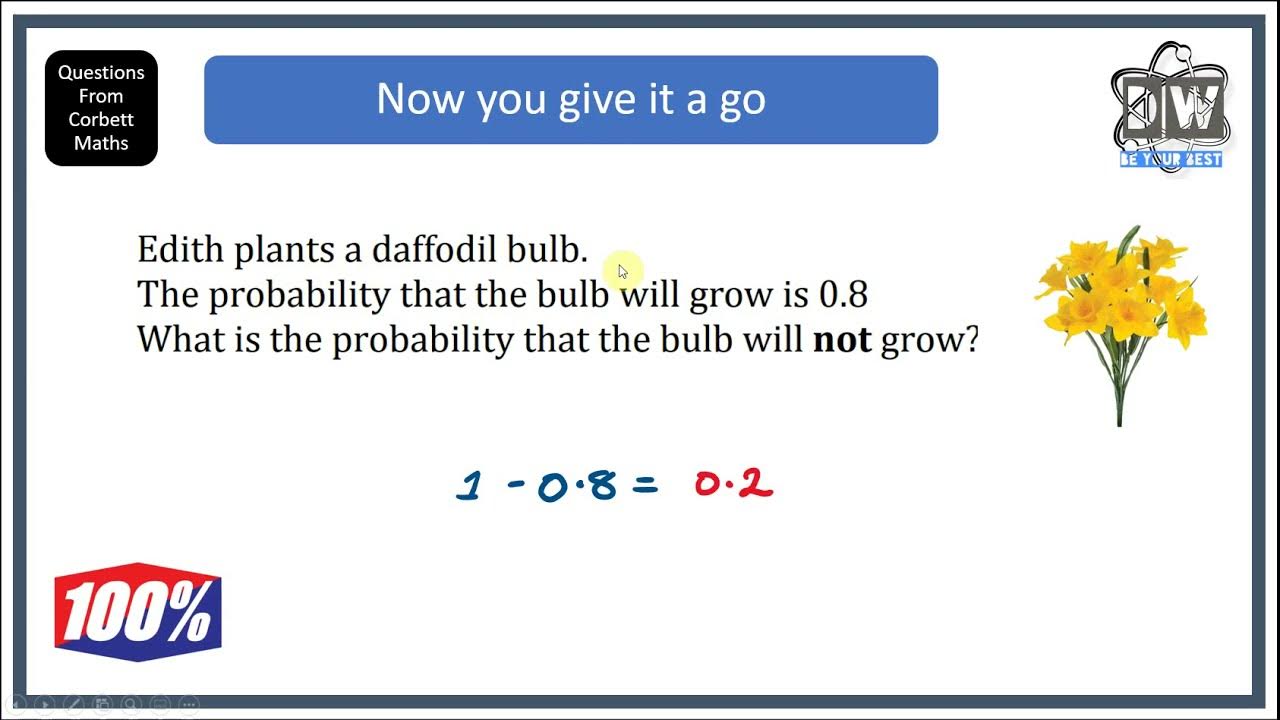Fácil e Rápido | APRENDA PORCENTAGEM EM 8 MINUTOS
Summary
TLDRThis video offers an engaging, 8-minute tutorial on mastering percentages. It breaks down key concepts like converting percentages to fractions and decimals and provides simple, practical examples for calculations, such as determining discounts, salary increases, and student results. Through relatable exercises, the video helps viewers learn how to calculate percentages quickly and efficiently. It focuses on clarity and speed, making the topic approachable for everyone. By the end, viewers are equipped with the skills to solve percentage problems confidently, applying the concepts to real-life situations.
Takeaways
- 😀 Percentages are easier to understand when broken down into fractions and decimals.
- 😀 30% can be written as 30/100, which simplifies to 3/10 or 0.3.
- 😀 To find 30% of a number, convert the percentage to a fraction (e.g., 30% = 30/100) and multiply by the number.
- 😀 When calculating percentages of numbers, you can simplify fractions to make multiplication easier (e.g., cancel out zeros).
- 😀 Using a fraction multiplication approach can help avoid mistakes when solving percentage problems.
- 😀 For problems like 'what is 30% of 800?', convert 30% to 30/100, multiply by 800, and simplify to find the answer.
- 😀 An alternative method to solve percentage problems is using a proportion, such as a rule of three (cross-multiply).
- 😀 If you know the percentage of a group that failed (e.g., 15% failed), you can easily find the number of people who passed by subtracting from the total.
- 😀 When a salary is increased by a certain percentage, calculate the increase by multiplying the salary by the percentage (as a fraction) and adding it to the original salary.
- 😀 Discounts are calculated similarly: find the discount amount by multiplying the percentage by the original price and subtracting it from the total cost.
- 😀 By practicing with real-world examples, percentage calculations become faster and easier to remember.
Q & A
What is the basic concept of percentages introduced in the video?
-The video explains percentages as a way to represent a part of a whole, often illustrated with the symbol '%'. It shows how percentages can be written as fractions or decimals.
How is 30% represented as a fraction and decimal?
-30% can be written as the fraction 30/100, which simplifies to 3/10. As a decimal, it is 0.3.
How can you calculate 30% of 800?
-To calculate 30% of 800, convert 30% to the fraction 30/100, then multiply by 800. Simplifying gives 240 as the result.
What is the rule of three method mentioned in the video for calculating percentages?
-The rule of three method involves setting up a proportion. For example, if 800 represents 100%, and you want to find 30%, you set up a proportion and solve for the unknown value.
How are students' approval and disapproval percentages calculated in the video?
-The video gives an example where 15% of 80 students are failed, which amounts to 12 students. Therefore, 85% of students, or 68 students, are approved.
What steps are followed to calculate a salary increase of 45% on a 2000 reais salary?
-To calculate a 45% increase on a 2000 reais salary, convert 45% to a fraction (45/100), multiply by 2000 to find the increase (900 reais), and then add the increase to the original salary (2000 + 900 = 2900 reais).
How is a discount of 40% calculated on a 900 reais cell phone purchase?
-To calculate a 40% discount on a 900 reais cell phone, convert 40% to a fraction (40/100), multiply by 900 to find the discount (360 reais), and subtract it from the original price (900 - 360 = 540 reais).
What does the speaker emphasize about learning percentages?
-The speaker emphasizes that percentages are easy to understand with practice, and that the process can be simplified by using fractions, decimals, and real-life examples to make learning quicker and easier.
How does the speaker use fractions to simplify percentage calculations?
-The speaker simplifies percentage calculations by converting percentages into fractions, and then multiplying the fraction by the value to find the result. This method helps make the process more intuitive.
What teaching methods are used to ensure the audience grasps the percentage concept?
-The speaker uses clear, step-by-step explanations with visual aids and multiple examples. He also encourages viewers to practice, offering real-world scenarios and tips for easy calculation of percentages.
Outlines

Cette section est réservée aux utilisateurs payants. Améliorez votre compte pour accéder à cette section.
Améliorer maintenantMindmap

Cette section est réservée aux utilisateurs payants. Améliorez votre compte pour accéder à cette section.
Améliorer maintenantKeywords

Cette section est réservée aux utilisateurs payants. Améliorez votre compte pour accéder à cette section.
Améliorer maintenantHighlights

Cette section est réservée aux utilisateurs payants. Améliorez votre compte pour accéder à cette section.
Améliorer maintenantTranscripts

Cette section est réservée aux utilisateurs payants. Améliorez votre compte pour accéder à cette section.
Améliorer maintenantVoir Plus de Vidéos Connexes

Percentages | Introduction | Quantitative Aptitude | TalentSprint Aptitude Prep

Tutorial presentasi sidang skripsi + download template (link ada di deskripsi)

How to Set a Self-Study Routine? |🎙️ 8 Minute English | Beginner

How to create your own Habit Tracker in Google Sheets - TUTORIAL + FREE TEMPLATE

PORCENTAGEM - Professora Angela Matemática

Probability (Event Not Happening)
5.0 / 5 (0 votes)
